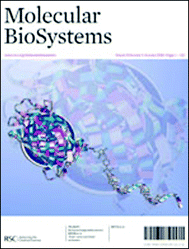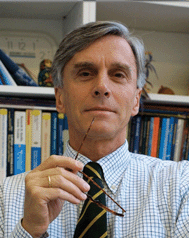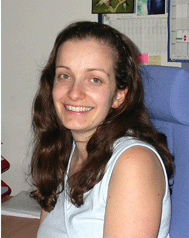ChemComm celebrates 40 years of publishing
Abstract
Welcome to 2005 and the fortieth year of successful publication in ChemComm of communications containing urgent preliminary accounts of important new work. In this first issue of the year we take a glimpse ahead to the exciting developments promised for 2005 and beyond.
On the occasion of its 40th birthday, ChemComm is proving that it still has the look of a fresh young journal. Looking through the issues over the last forty years, we can observe how communications have developed in both length and complexity. In recognition of this, 2005 sees us take the opportunity to unveil an appealing new, easily readable three-page format for communications. This added space allows authors more flexibility to better develop and discuss the wealth of results now produced by the modern chemist. Not only are we transforming the design to ensure maximum impact and visibility, but from 2005 we also guarantee that issues containing the most important communications in the chemical sciences will arrive on your desk more frequently than ever—as ChemComm moves to weekly publication.
 | ||
| Fig. 1 The changing face of ChemComm over 40 years of publication. | ||
ChemComm has changed quite considerably since its inception as a journal of The Chemical Society in 1965. An insight into the changing face of communications over forty years is hinted at in our fascinating article by E. W. Meijer in this issue,1 profiling Hans Wynberg, the author of the first ever ChemComm. This article is the first in a series of specially commissioned 40th anniversary articles reviewing the latest ideas and opinions in all areas of the chemical sciences. These articles will definitely be something to look out for throughout 2005! ChemComm will also be publishing a series of interesting editorial features highlighting some of the trends in the communications published over the years. Of course, throughout 2005 we shall also continue to publish the highly successful Feature Articles, introduced nine years ago in order to provide up-to-date accounts of research in topical fields.
Although the look and feel of ChemComm has transformed dramatically over the years, one essential feature has remained constant—that the journal serves as a forum for preliminary accounts of significant work of general appeal or of specialist interest. Our referees provide vital assistance in judging whether the significance of submitted communications is such that rapid preliminary publication will be of advantage to current chemical research. We would very much like to thank all of our referees for their considerable hard work in maintaining the quality of the papers published in ChemComm.
The Royal Society of Chemistry's Publishing staff constantly strive to ensure that the journals take advantage of the highest level of technical innovation to make working with us as user-friendly as possible for referees and authors alike. In 2004 we launched the ReSourCe web portal,2 providing rapid access to the online services for authors and referees. This new advance integrates with the electronic submission process for authors to facilitate the procedure from submission through to publication. The site also makes the reviewing process faster and more accessible for the referees, whose efforts are so highly appreciated. Another technical advance from RSC Publishing is our Experimental Data Checker—a java applet, developed in collaboration with the Unilever Centre for Molecular Science Informatics (at the University of Cambridge, UK), that analyses experimental data. Its aim is to provide helpful information for authors, referees and readers. A detailed study of the Experimental Data Checker has been published in Organic & Biomolecular Chemistry.3
 | ||
| Fig. 2 Molecular BioSystems—new for 2005! | ||
An exciting new RSC journal to look out for later in the year is Molecular BioSystems—a high impact chemical biology journal with a particular focus at the interface between chemistry and the -omic sciences and systems biology. Molecular BioSystems will be launched this summer and ChemComm subscribers will have free access to the print and online versions. The Editorial Board is chaired by Professor Thomas Kodadek of the University of Texas Southwestern Medical Center. Further information about the journal and a call for papers can be found at the website—www.molecularbiosystems.org—which is being constantly updated. There, readers are encouraged to sign up to receive free e-alerts informing of new developments.
As Professor Nolte noted at this time last year,4 2004 brought you Chemical Science, a vibrant free supplement drawing together news and research highlights from across all RSC publications. We are delighted to welcome the subsequent arrival of Chemical Science's new companion publication, Chemical Technology, covering the latest applications and technological aspects of the chemical sciences.
 | ||
| Fig. 3 Chemical Science and Chemical Technology—free supplements highlighting news and research from all RSC publications. | ||
The Editorial Board would like to sincerely thank Professor Jim White for his contributions as an Associate Editor, as he retires after 9 years' service. Jim contributed many ideas to the development of the journal and we are grateful for his significant role in the flourishing of ChemComm during his term in office. Many of Professor White's key papers in natural product synthesis have been published in ChemComm and Organic & Biomolecular Chemistry.5 We also express thanks to Professor Clément Sanchez, retiring Editor-in-chief of New Journal of Chemistry, as he, too, retires from the ChemComm Editorial Board. Professor Sanchez publishes extensively in the area of materials chemistry.6 He will be succeeded in his role as New Journal of Chemistry Editor-in-chief by Professor Jean-Pierre Majoral of Toulouse, France. Professor Majoral's two main research themes are dendrimer chemistry7 and main group chemistry.8
Following the retirement of Professor White we are pleased to welcome Professor P. Andrew Evans of Indiana University as our new Associate Editor for Organic Chemistry. Professor Evans' research focuses on methodology development for the total synthesis of complex natural products.9
We were greatly saddened by the untimely death of Associate Editor Professor Ian Rothwell in 2004. Professor Rothwell ran a highly efficient and fair office and his wisdom and good judgment are deeply missed. An obituary was published last year.10 A new Associate Editor for Inorganic, Organometallic and Materials Chemistry for 2005 has now been appointed and we welcome Professor T. Don Tilley of the University of California, Berkeley into this role. Professor Tilley's research encompasses exploratory synthetic, structural, and mechanistic studies of novel inorganic, organometallic11, solid state, and polymeric systems.
Professor Andrew Holmes reminded us two years ago12 that ChemComm was fast achieving status as a must-read journal. With even more high impact content appearing even more rapidly every week in 2005, and with our unbeatable service to authors, we believe that ChemComm is truly the journal of choice for swift publication of the most significant work in the chemical sciences.
On behalf of the Editorial Board and the Editorial staff at the Royal Society of Chemistry, we would like to wish you a happy and successful New Year.
Roeland Nolte
Chairman, ChemComm Editorial Board
Sarah Thomas
Managing Editor, ChemComm
Sula Armstrong
Deputy Editor, ChemComm
Notes and references
- E. W. Meijer, Chem. Commun., 2005 Search PubMed DOI: 10.1039/b416734c.
- S. Thomas, Chem. Commun., 2004 Search PubMed DOI: 10.1039/b414424b.
- S. E. Adams, J. M. Goodman, R. J. Kidd, A. D. McNaught, P. Murray-Rust, F. R. Norton, J. A. Townsend and C. A. Waudby, Org. Biomol. Chem., 2004, 2, 3067–3070 RSC.
- R. Nolte, Chem. Commun., 2004 Search PubMed DOI: 10.1039/b315302a.
- C. M. Lincoln, J. D. White and A. F. T. Yokochi, Chem. Commun., 2004 Search PubMed DOI: 10.1039/b412811g J. D. White, Q. Xu, C. Lee and F. A. Valeriote, Org. Biomol. Chem., 2004, 2(14), 2092–2102 Search PubMed; M. S. Shanmugham and J. D. White, Chem. Commun., 2004, 44–45 RSC; J. D. White, C. Lee and Q. Xu, Chem. Commun., 2003, 2012–2013 RSC.
- A. Moores, F. Goettmann, C. Sanchez and P. Le Floch, Chem. Commun., 2004 Search PubMed DOI: 10.1039/b412553c B. Julian, R. Corberan, E. Cordoncillo, P. Escribano, B. Viana and C. Sanchez, J. Mater. Chem., 2004, 14, 3337–3343 Search PubMed; A. Bouchara, G. Mosser, G. J. de A. A. Soler-Illia, J.-Y. Chane-Ching and C. Sanchez, J. Mater. Chem., 2004, 2347–2354 RSC; P. Innocenzi, P. Falcaro, S. Schergna, M. Maggini, E. Menna, H. Amenitsch, G. J. A. A. Soler-Illia, D. Grosso and C. Sanchez, J. Mater. Chem., 2004, 1838–1842 RSC; G. J. A. A. Soler-Illia, E. L. Crepaldi, D. Grosso and Clement Sanchez, J. Mater. Chem., 2004, 1879–1886 RSC; L. Nicole, C. Boissiere, D. Grosso, P. Hesemann, J. Moreau and C. Sanchez, Chem. Commun., 2004, 2312–2313 RSC; S. Areva, C. Boissiere, D. Grosso, T. Asakawa, C. Sanchez and M. Linden, Chem. Commun., 2004, 1630–1631 RSC; F. Cagnol, D. Grosso and C. Sanchez, Chem. Commun., 2004, 1742–1743 RSC; F. Goettmann, D. Grosso, F. Mercier, F. Mathey and C. Sanchez, Chem. Commun., 2004, 1240–1241 RSC; S. Willemin, G. Arrachart, L. Lecren, J. Larionova, T. Coradin, R. Clerac, T. Mallah, C. Guerin and C. Sanchez, New J. Chem., 2003, 1533–1539 RSC; B Lebeau, C. Marichal, A. Mirjol, G. J. de A. A. Soler-Illia, R. Buestrich, M. Popall, L. Mazerolles and C. Sanchez, New J. Chem., 2003, 166–171 RSC; E. L. Crepaldi, G. J. de A. A. Soler-Illia, D. Grosso and C. Sanchez, New J. Chem., 2003, 9–13 RSC; N. Baccile, D. Grosso and C. Sanchez, J. Mater. Chem., 2003, 3011–3016 RSC; M. Llusar, G. Monros, C. Roux, J. L. Pozzo and C. Sanchez, J. Mater. Chem., 2003, 2505–2514 RSC; M. Llusar, C. Roux, J. L. Pozzo and C. Sanchez, J. Mater. Chem., 2003, 442–444 RSC; F. Cagnol, D. Grosso, G. J. de A. A. Soler-Illia, E. L. Crepaldi, F. Babonneau, H. Amenitsch and C. Sanchez, J. Mater. Chem., 2003, 61–66 RSC; C. Boissiere, D. Grosso, H. Amenitsch, A. Gibaud, A. Coupe, N. Baccile and C. Sanchez, Chem. Commun., 2003, 2798–2799 RSC.
- V. Darcos, A. Duréault, D. Taton, Y. Gnanou, P. Marchand, A. Caminade, J.-P. Majoral, M. Destarac and F. Leising, Chem. Commun., 2004, 2110–2111 RSC; C. Larpent, C. Geniès, A. P. De Sousa Delgado, A. Caminade, J.-P. Majoral, J. Sassi and F. Leising, Chem. Commun., 2004, 1816–1817 RSC; E. Trévisiol, V. Le Berre-Anton, J. Leclaire, G. Pratviel, A. Caminade, J.-P. Majoral, J. François and B. Meunier, New J. Chem., 2003, 12, 1713–1719 RSC.
- V. Cadierno, M. Zablocka, B. Donnadieu, A. Igau and J. Majoral, New J. Chem., 2003, 4, 675–679 RSC.
- P. A. Evans, E. W. Baum, A. N. Fazal and M. Pink, Chem. Commun., 2004 Search PubMed DOI: 10.1039/b413438a.
- M. H. Chisholm, Chem. Commun. Search PubMed DOI: 10.1039/b408753b.
- J. Jarupatrakorn and T. D. Tilley, Dalton Trans., 2004, 17, 2808–2813 RSC.
- A. Holmes, S. Thomas and L. Gill, Chem. Commun., 2003 Search PubMed DOI: 10.1039/b2119889g.
| This journal is © The Royal Society of Chemistry 2005 |





